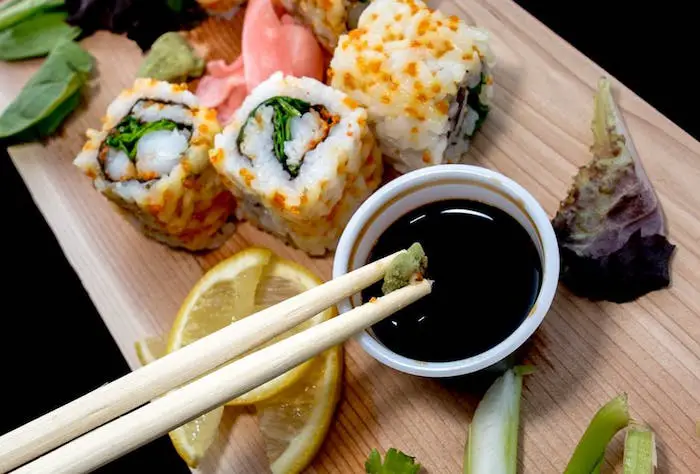In the U.S., you might know wasabi as the spicy, bright green paste that accompanies your favorite sushi order. But what is wasabi and where does it come from? And is it true that there’s imitation wasabi? To answer all our spicy wasabi-related questions, we consulted Pascale Yamashita, a recipe developer, food stylist, food photographer and avid food lover based in Japan.
Wasabi, also known as Japanese horseradish, is a plant that belongs to the Brassicaceae family. People often consider wasabi to be the root of the plant, but it is actually a rhizome, a fleshy, underground root-like stem located between the wasabi plant’s leaves and its thin roots. The rhizomes are grated and served fresh. In Japan, grated wasabi is a popular condiment that’s typically enjoyed with sashimi and sushi alongside soy sauce for dipping.
Wasabi is the green paste that you will find served with sushi dishes. It is very spicy and should be used lightly. However, it plays a vital role in your meal. Wasabi aids digestion and helps keep the fish safe for eating.

What Does Wasabi Taste Like?
Wasabi is usually described as hot with a spicy flavor like horseradish or hot mustard. But different parts of wasabi taste different. The top part (near the leaves) is brighter green in color and contains more moisture than the bottom part; it tends to be more flavorful than hot. The bottom part is a pale, almost white-green color; it is less flavorful but packs more heat. The middle part of wasabi is well-balanced between flavor and heat. In Japan, some sushi chefs grate the top and bottom parts of fresh wasabi and mix them together to balance the flavor.
How Hot Is Wasabi?
Wasabi tastes spicy, but it isn’t hot in the same way chili peppers are. Chilis stimulate the palate whereas wasabi stimulates the nose. This is because the peppers’ spiciness comes from its capsaicin content, whereas wasabi’s pungency comes from a chemical compound called allyl isothiocyanate (it’s also what makes mustard, horseradish and cabbage spicy). When you eat wasabi, the sensation registers as a nasal-clearing burst of heat that dissipates quickly. Since wasabi doesn’t contain capsaicin, it can’t be compared to peppers using Scoville units as a measurement. Wasabi possesses a unique spiciness, but horseradish or hot mustard are the most comparable.
Wasabi is the grated rhizome of the wasabi plant. Prepared wasabi paste, also known as imitation wasabi, is what is sold in grocery stores and on most restaurant menus in the U.S. To mimic the flavor and color of wasabi, prepared wasabi paste typically contains horseradish, mustard powder and green food coloring.
I have grated wasabi in Izu Peninsula.food touring sightseeing
d3_plus D.Naruse @ Japan/Getty s
Easy Sushi Sauce Recipe : Spicy Mayo recipe & Sushi Sauce for deep fried sushi roll
FAQ
What is the green Japanese sauce?
What’s the green stuff around sushi?
What is the green sauce on sushi not wasabi?
What is wasabi made of?
